After my first driving adventure on the other side of the road, I went on another trip to a country where you drive on the left side of the road, the land of the rising sun, Japan. Now with some experience, would my next time driving on the left side be as easy?
Before all of that, you might be asking, “Why drive in Japan? Isn’t there a great public transportation system over there?” And the answer is, normally you wouldn’t. The train system in Japan is very extensive, and with options like the JR Pass for tourists, you should be able to get to the majority of tourist areas for free or just with a charge for the last local connection. Plus, driving in Japan is expensive, with pricey car rentals and highway tolls.
Why might you want to drive in Japan?
I can only think of 3 reasons you might possibly want to drive in Japan.
- You are in Hokkaido and want to go explore the parks on the more remote part of the island
- You are in Okinawa, where there isn’t an extensive train system
- You are trying to explore the countryside / more remote areas of Japan and you are a bit limited in time
In my case, we wanted to explore destinations around the Mie Peninsula and Wakayama Prefecture, such as the Ise Grand Shrines, Toba, Shirahama, and Wakayama, and we only had about 2.5 days to do so in our schedules. So in interest of time, we chose to rent a car for those 2.5 days, even though we were carrying JR Passes.
How do you rent a car in Japan?
First, how do you even drive a car as a foreigner in Japan? The requirements are that you must be at least 18 years old, and hold an international driver’s permit from a country who has agreed to the 1949 Geneva Convention. There are some other countries, like Belgium, France, Germany, Monaco, Slovenia, Switzerland and Taiwan, who don’t issue permits based on the 1949 Geneva Convention, but can obtain an official Japanese translation of their driver’s license in order to drive in Japan. If your country doesn’t fall into any of those categories, you must obtain a Japanese’s driver’s license to drive in Japan. The impression I’ve gotten from my Japanese friends is that it is really difficult to pass the tests to obtain a driver’s license, so it’s probably not feasible for a short trip. I suggest finding a friend from a more compliant country to drive for you!
How do you proceed to rent a car, given that you have met all the requirements? You can contact one of the leading car rental companies in Japan, like Nippon Rent a Car, Nissan Rental Car, Ekiren, etc., but there is no guarantee that they will have English language rental systems. Some have recently starting having English language websites or at least a number you can call to make a reservation in English, but for the sake of avoiding misunderstandings, I wouldn’t recommend this option.
Using an international car rental company such as Avis, National, Budget, etc., or one of the aggregators like Kayak, RentalCars.com, etc. to rent a car in Japan is possible, but most just contract with one of the leading Japanese car rental companies, and probably will not have the most competitive rates.
There are a couple of companies that contract directly with the leading car rental companies that are tailored specifically for foreigners renting in Japan with which you will actually get competitive rates. One is Japan Experience, which offers English language GPS and English language telephone support in case of an emergency. This option is probably better for those who are concerned about getting lost or in trouble while driving in Japan. There’s also ToCoo!, which has an English language reservation form, but does not necessary have English language customer service or roadside assistance. I personally used ToCoo! for my trip, as I found they had the best rates overall, and I am somewhat comfortable with my Japanese.
There are also somewhat pricey fees to drop off the car in a different location than the one you picked it up. I found if you drop it within some vicinity of the original location, sometimes there is no fee, but farther away, the fees goes up.
Here’s an example of the cost of a rental. I rented a compact car for for 2.5 days, from Wednesday morning to Friday night. I’m picking up the car in Kyoto and returning to Osaka. ToCoo! is giving me a price of 16,000 yen for the rental, and 3,000 yen for dropping the car off in a different location than which I picked it up. And this was one of the best rates I could find. Ouch! I’ve declined the insurance, as damage to the car should be covered by most decent credit cards.
Warning about Japanese cars, the smallest size is SMALL. Japan’s cities are densely populated and cars are smaller in size. The smallest car could probably only fit 2 pieces of luggage, with 2 people squeezed uncomfortably in the back. I rented a size up, and it barely fit 3 people’s worth of luggage, but any more and it would have been a pretty tight squeeze.
What else might you need for driving in Japan?
There are various options that come with Japanese rental cars. Which ones should you get? Most cars by default now come with built in GPS systems. Although I rented through ToCoo!, which doesn’t specifically offer English language GPS systems, when I picked up the car, the attendant helped me switch the included GPS to English, so that wasn’t an issue at all. I think most modern GPS systems in Japan have settings to change to other languages. What I found it that while the menus and text were in English, the place names were not translated. There were voice directions in English as well, but all the place names were just omitted so that the directions were just, “in 800 meters, make a right.”
You might see some text asking you if you want to also rent an ETC card. What is an ETC card? Simple, it stands for Electronic Toll Collection. ETC allows you to electronically pay for highway tolls and skip the cash lane, very similar to such systems in the United States. Furthermore, sometimes there are various discounts for using ETC to pay for your tolls, saving you money. Pretty much all rental cars in Japan have an ETC card reading system preinstalled, and what the rental agencies are asking is if you already have an ETC card yourself or if you wanted to rent one. I found that at least on ToCoo!, the ETC card did not cost any extra. What they did though was preauthorize a 15,000 yen card on my card to pay for any tolls, and at the end of the trip, charge me the actual amount of my tolls.
The ETC card was shipped to my hotel a couple of days before I was scheduled to pick up the car. On the day of the rental, all I had to do was insert the card into the reader, wait for it to register, and everything would be set!
The actual driving experience
Overall, it was very smooth! I found despite the warnings from my Japanese friend that drivers in Kansai were very aggressive and would look for any chance they got to squeeze by you, overall they were very polite. Warning, Japanese drivers will tailgate very aggressively. I found multiple times that I would suddenly find a car right up behind me, but then they would eventually back away. A lot of money has been poured into the Japanese highway system, and the overall conditions of the roads and infrastructure was very good.
Back to GPS. Japanese GPS systems are very, very full featured. I would get live traffic conditions, notifications of road maintenance and construction, and indicators for all sorts of places on the display, like gas stations, hotels, shrines, etc. Also, when I approached intersections or even toll gates, the GPS would have a 1st person display that indicated which lane to enter or which way to turn. To enter your destination, apparently it’s pretty typical look it up by phone number. Everything seems to have a phone number, from shrines, to parks, to random vista points for tourists. It’s pretty fast and easy to look up the phone number from Google Maps and punch that in, instead of looking up a place by address or name, especially if you don’t know the language.
On our second day of driving though, we found something pretty weird. Our GPS was giving a time estimate 30 minutes later than Google, and we didn’t know what was up. Eventually, we figured it out when I turned onto a newer looking road, and the GPS showed us driving in the middle of nowhere. Apparently what we were driving on was marked as a future road in the GPS, but the system had not updated when it was completed. This was somewhat surprising, as we were getting live construction updates, yet the routing data was not updated?
The lesson here is that you should cross-check with your favorite smartphone navigation app as well. If there isn’t a discrepancy, I’d go with the GPS. If there is, follow your own directions.
Getting gas
Fuel comes in 3 different types in Japan, diesel, regular, and “hai-oku”, literally meaning high octane, typically labeled as Premium, Super, or some other marketing label. You should ask your rental car agency what kind of gas your car takes. Gas stations in Japan can either be full service or self-service.
In either case, you can buy either a set amount of gas (and you’ll be refunded the difference if you don’t fill up that much), or do “mantan”, literally meaning full tank, and you will be charged for however much gas it takes to fill your tank.
I didn’t have any issue with self-service gas stations taking credit card. I just pressed the right buttons and things worked as usual. Unfortunately, there doesn’t seem to be a clip or anything to keep the nozzle going, so you just have to hold it there until it stops by itself.
Full service gas stations were interesting. The gas pumps hang from the roof and are pulled down to the fill spout. I suppose this is for space spacing reasons. It wasn’t too hard to ask for a full tank of regular. The attendants are very helpful. I was offered a free wipe of my side mirrors as well as a towel to wash my dash. Sometimes they will also offer to take our your garbage or the ashtray, as well as offer to give directions for your way out.
Pit stops!
Normally when I think of rest stops in America, I think of pretty depressing areas with maybe a toilet and a vending machine, or a gas station with a dinky convenience store. But given that Japan has poured so much money into their highway systems, so they have also poured a lot of money to make pit stops along the highway really nice! There are two different classes of stops, Parking Areas and Service Areas. Parking Areas obviously are a place to park, but often there will be some shops or a gas station as well. Service Areas, on the other hand, are a whole different tier. They will often have a small complex of shops, restaurants, possibly a vista point. The prices at the shops were slightly more for the same items compared to convenience stores outside of Service Areas, but weren’t too much more. I really wondered how the Service Areas managed to sustain themselves economically given how nice they were and how many stores there were there, for not a huge amount of traffic.
Other advice
Even though most major signs were in English, there were many signs with symbolic indicators that were unfamiliar to me. Also, many of the lane markings were unfamiliar as well. This was not a big deal, as anything important was marked in a way to be understood globally, but I may have missed some subtle indicators.
To return my ETC card (yes you have to return it), all I did was drop it in the prepaid envelope that ToCoo! sent me and left it with my hotel concierge. I could have also found a regular postal drop box and left it there as well.
In conclusion
Overall, driving in Japan was a really nice experience that I would be willing to do again given the right circumstances. I’m not intimidated by driving there anymore. But otherwise if possible, I would still stick to trains and other forms of public transportation to get around while you’re in Japan!

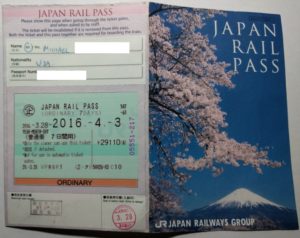
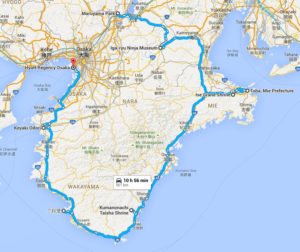
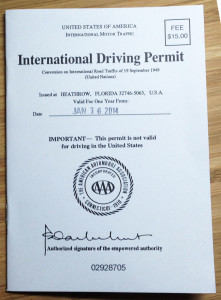
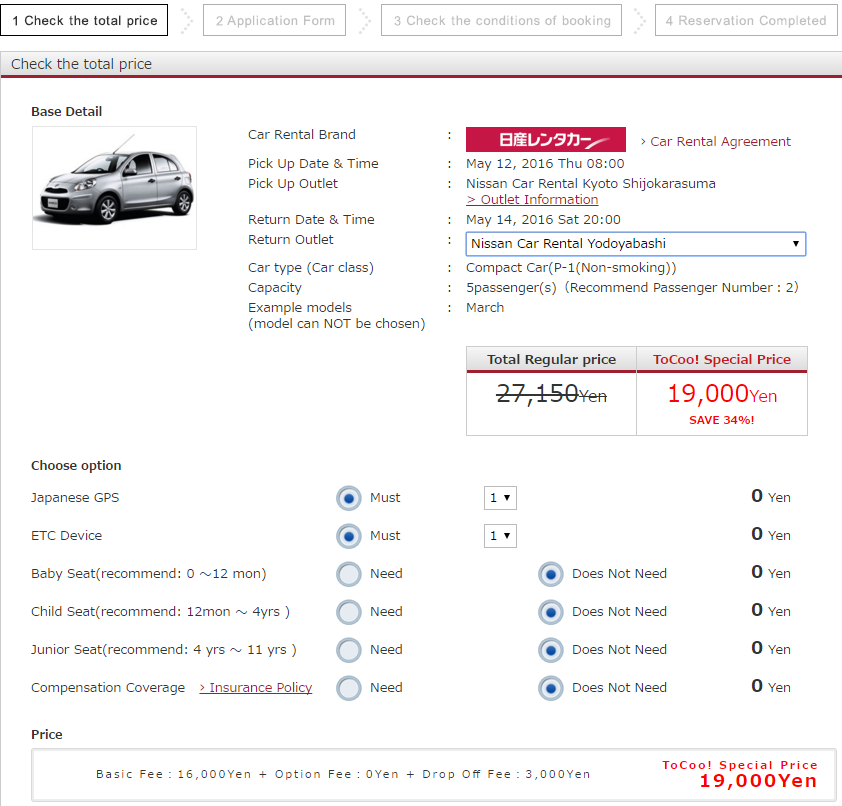

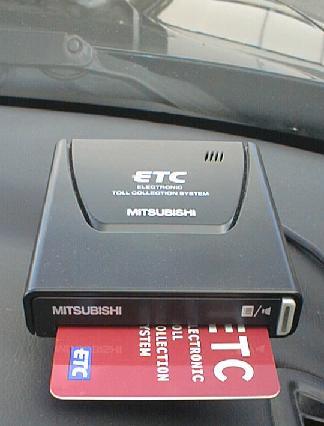
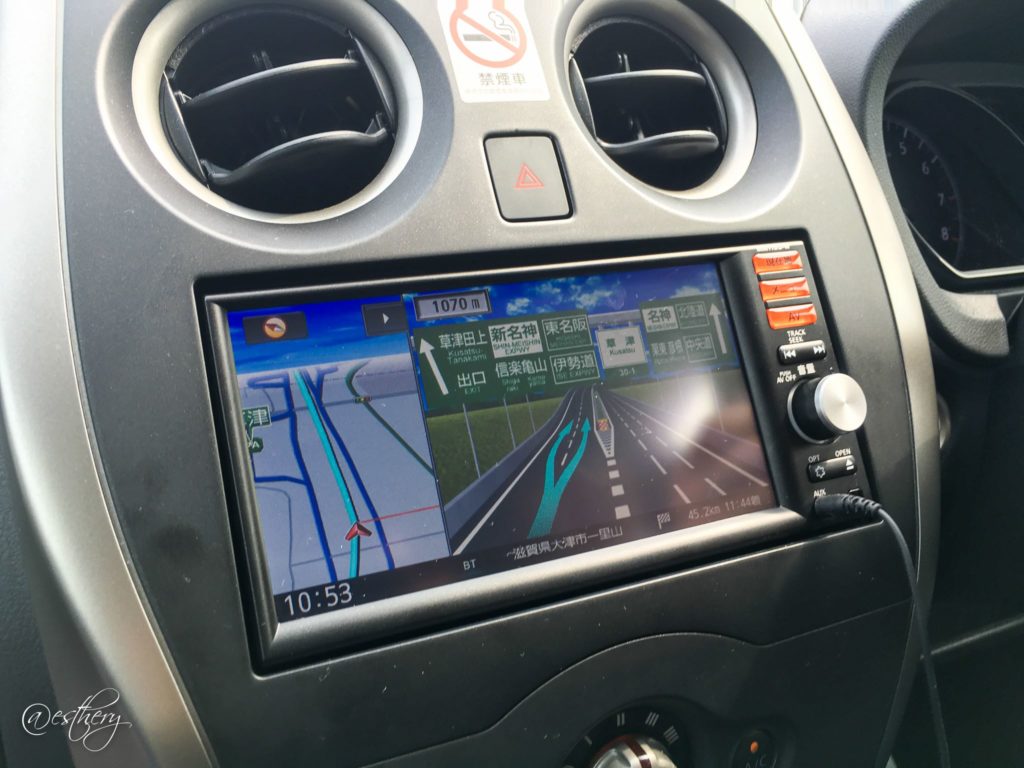
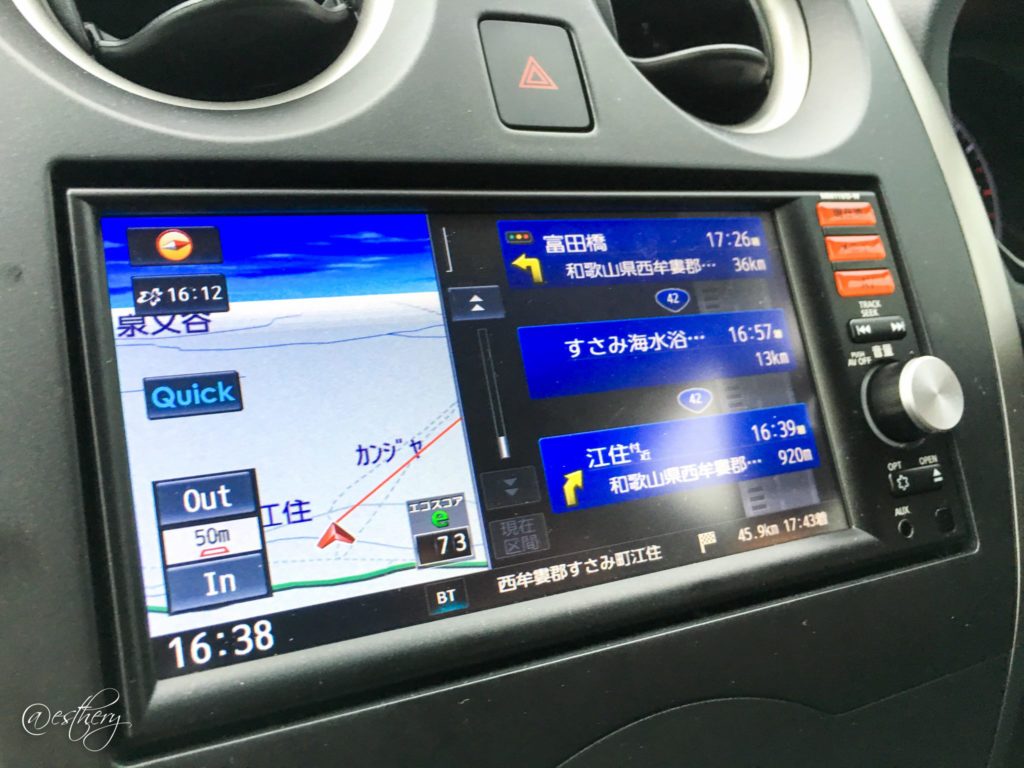
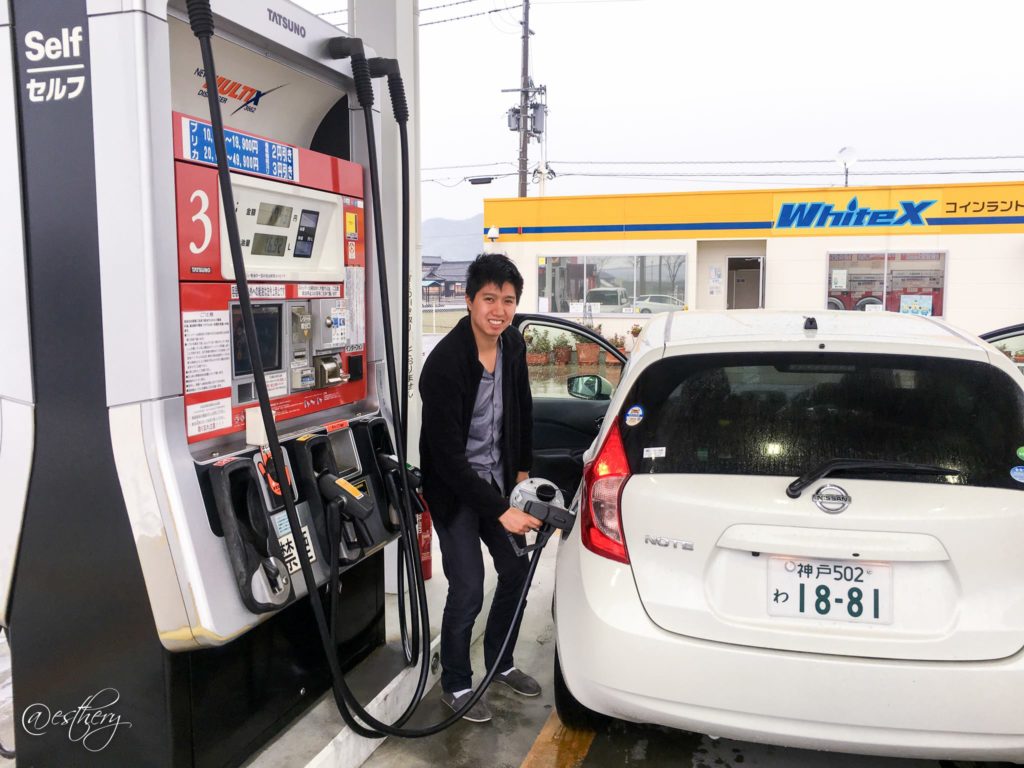
I spent a lot of time driving around Thailand (my wife is Thai) and it’s not difficult to get used to. If the gas pedals were different, we’d be screwed but car manufacturers or governments realized that and they’re mandated with the clutch – brake – gas patterns.
I live in Japan (and not in a city) and own a car. Driving on the left isn’t that hard. The only thing that bothered me at first was accidentally getting into the wrong side of the car!